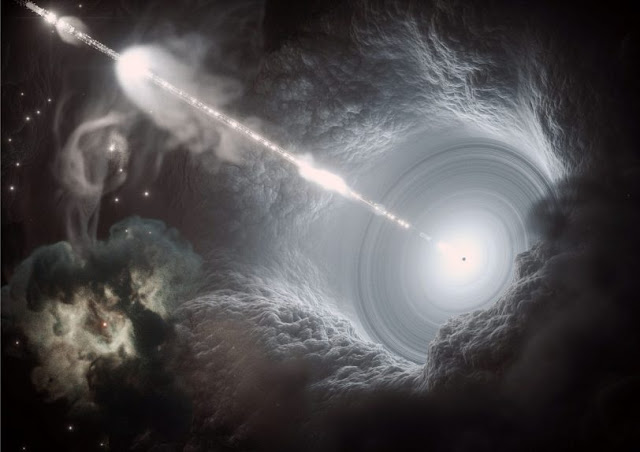One of the Largest Black Holes Ever Found by Science Has 34 Billion Times the Mass of the Sun.
Researchers recently revealed that they have discovered the largest black hole ever observed in the early Universe. It consumes one of them every day and is 34 billion times heavier than our Sun.
The study, which was directed by the National University of Australia (ANU), revealed the size and mass of the black hole that is expanding the quickest in the universe. The same team of researchers discovered “J2157,” a black hole, in 2018.

The study on the size and form of the enormous black hole was published in Monthly Notices of the Royal Astronomical Society.
According to Dr. Christopher Onken and his associates, this object is 34 billion times heavier than the Sun and consumes the same amount of energy in a day as the Sun. That amount is in capital letters. Compared to Sagittarius A*, the black hole at the heart of the Milky Way galaxy, the enormous black hole is around 8,000 times more massive.
According to Onken, the Milky Way’s black hole would have to consume two-thirds of all the stars in our galaxy if it wants to gain weight.
Less than 10% of the universe’s current age, or 1.2 billion years ago, when scientists first observed the item. This makes it the most massive black hole ever discovered in the early Universe.
It is the largest black hole ever measured in the early cosmos, according to Onken.
In an effort to learn how black holes may grow so huge so rapidly in the universe’s infancy, the team is currently searching for other black holes.
“We recognized it was a very massive black hole when we observed how rapidly it was developing,” explains Dr. Fuyan Bian, a member of the team from the European Southern Observatory (ESO). “How much mass a black hole already has determines how much matter it can consume. The rate at which this thing consumed material made us wonder if it would break a previous record. And now we know, he adds.
The group, which includes researchers from the University of Arizona, used the European Southern Observatory’s (ESO) Very Large Telescope (VLT) in Chile to precisely calculate the black hole’s mass.
With a black hole that size, Onken added, “we’re also eager to see what we can learn about the galaxy in which it’s expanding.” “Did the black hole gobble up an unusually large quantity of the area around it, or is this galaxy one of the giants of the early Universe? To determine that, we must continue our investigation.
J2157 is the name of a supermassive black hole in a quasar galaxy. The 10-meter Keck telescope in Hawaii and the 8-meter Very Large Telescope in Chile allowed astronomers to get greater insight into the monster.
The distance and total brightness of the quasar were determined by astronomers. They were able to calculate the black hole’s size and the amount of the disc it could consume thanks to this.
With a diameter of around 200 billion kilometers, the black hole is immense. If it were our Sun, it would engulf the entire solar system since it is so enormous.
Reference(s): ANU | Hungriest of black holes among the most massive in the Universe
Research Paper | A thirty-four billion solar mass black hole in SMSS J2157–3602, the most luminous known quasar
Do not forget to share your opinion with us to provide you with the best posts !



0 Comments